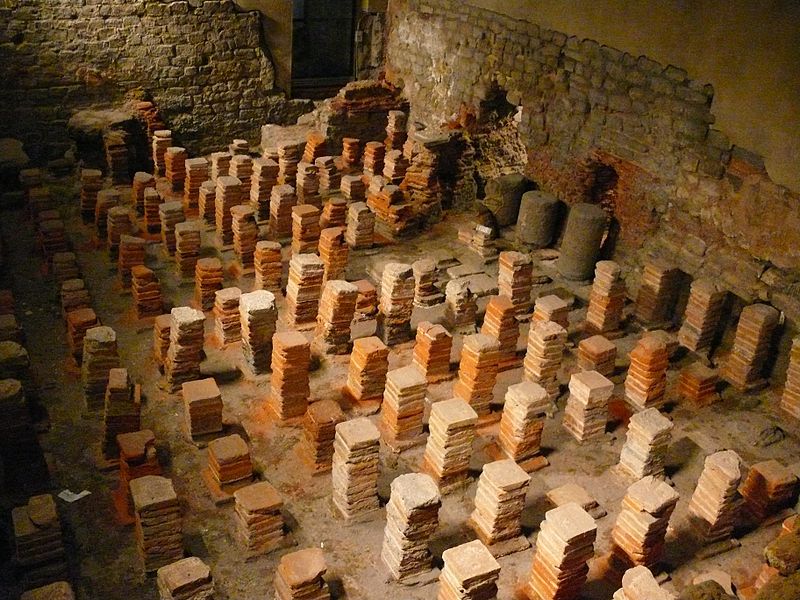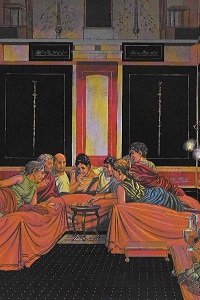The Roman Hypocaust: Ancient Central Heating
Updated on: 09 December 2025Reading time: 4 minutes
The hypocaust system (hypocaustum in Latin) was a heating system used in wealthy Roman homes and Roman baths, and was the closest equivalent to modern central heating. The hypocaust was a system that circulated hot air beneath the floor and through the surrounding walls.
Hypocaust construction

Bath, UK CC BY-SA 3.0 |
Roman houses equipped with a hypocaust system had a furnace that heated the air. The floor was raised above the ground by pillars called pilae so that hot air could circulate beneath it. The floor consisted of a layer of tiles, followed by a layer of concrete, and then another layer of tiles. There were also tile or clay flues built within the walls, which circulated the hot air to heat the floors and walls of the rooms above. The hot air would eventually escape through the roof. The walls contained ceramic tiles to help retain the heat.
The Romans also ensured that hot air and smoke did not leak through the floors and walls, which was quite a feat of engineering considering the materials available at the time. It is worth noting that a leaking floor was dangerous and could even cause death, as carbon monoxide is odourless and toxic.
The Romans positioned the rooms requiring the most heat closest to the furnace, and they could increase the temperature by adding more wood. In the Roman baths, this room was called the caldarium. In his book De architectura, Vitruvius describes the construction of the hypocaust for public baths and explains how the Romans could save fuel by placing the men’s hot room (the caldarium) next to that of the women, with both rooms adjoining the tepidarium.
Hypocaust system operation and cost
Operating a hypocaust was quite expensive, and only wealthy Romans could afford such a system in their homes. Building a hypocaust was also costly and required skilled engineering, as the system had to be both waterproof and airtight. It relied on
It is worth noting that most Romans could experience the comfort of such a heating system by visiting the thermae, or Roman baths, where the walls and floors were heated. The Old Baths of Pompeii are an excellent example of such public facilities.
Interesting facts about the hypocaust system
|
SOURCES
